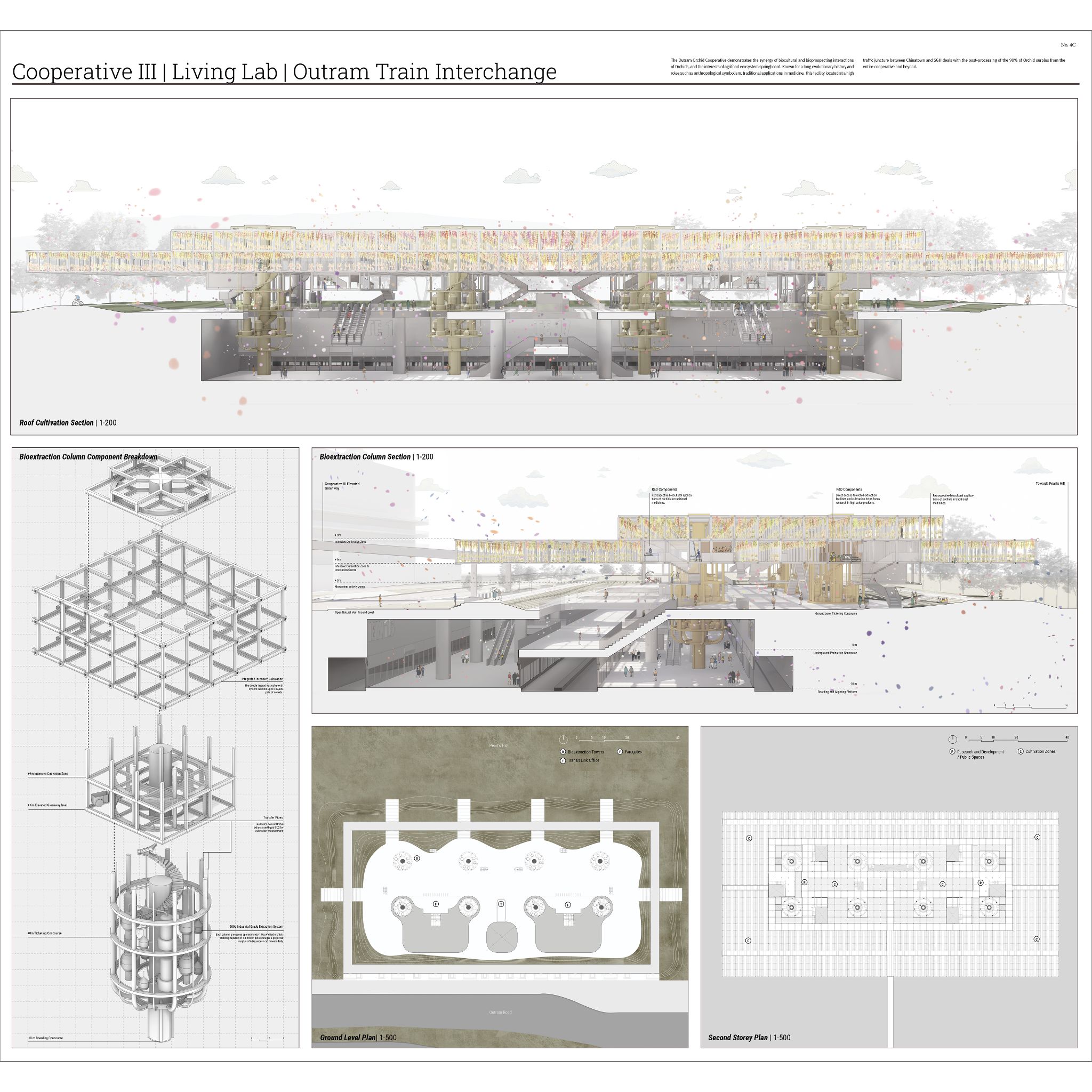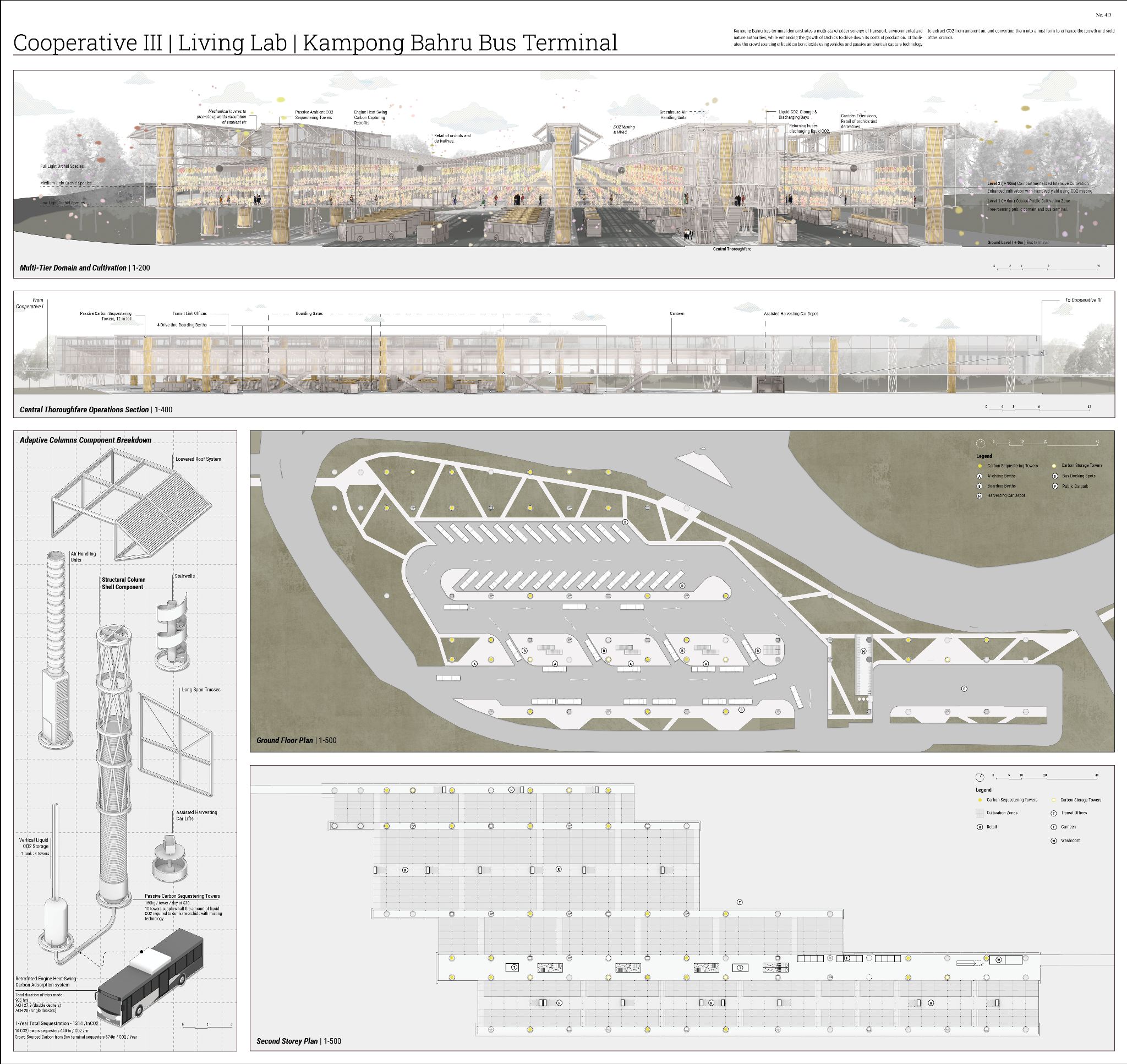thesis
The orchid cooperative.
Full Report
Student: Fong Shi Yuan
Superivsor:
Zhang Ye
Part I Research
Orchids has been for the longest time, sought after for its aesthetic and medicinal quality in Southeast Asia and all around the world. The national flower that once flourished in its natural ecology and its lucrative cut-flower trade in Singapore that made her the top producer and known internationally in the 1900s occupied 400ha of land at its peak, diminished due to rapid urbanization, land scarcity, and a departure from the agrarian industry.
“Bloom or gloom? Orchid farm owner weighs prospects (Straits Times, 2018)”
Today, less than 40ha of Orchid farms that remains account for 3.9% of the US$400 million global orchid trade, occupying almost half of the local agricultural land. In the next decade, the nation will have to compromise another 20ha of Orchid farms as it struggles to find balance in limited agricultural land to strengthen food security.
“View through the window may influence recovery. (Ulrich Roger, 1984)”
Turning to its evolutionary richness across the different species; orchids have been used as medicinal plants in china, edible tubers in Africa, and socio-political tool in Singapore. People have extracted the essences of plants through various methods for its colour, fragrance and micronutrition comparable to a blueberry. In addition, this richness could even further enhance the recuperative properties of the natural environment on human wellness according to Ulrich Roger in his evidence-based design through the multitude of uses as a form of horticulture and therapy.
Part II
Design
“The more Garang Farmers will look for new ways of farming (…)”
The Orchid Cooperative is a response to the nation’s effort in revitalizing her ailing Orchid industry. The cooperative proposes to re-embed the farms into a series of emerging community horticultural landscapes through the wealth of orchid uses, optimizing and diversifying traditional Orchid cultivation into a shared value chain.
Discarding the traditional model of farming, the Cooperative is anchored by three key thrusts derived from its issues- to synergize multi-stakeholder national interests, support the needs of an ageing population, and advancing high value economic uses.
The cooperative manifests as three typologies in four key nodes along a proposed green network connection between Pearl’s Hill and the railway corridor. The nodes of Spooner Road Flats, Kampung Bahru Bus Terminal, Singapore General Hospital, and Outram MRT station has been chosen for their diverse characters that demonstrates the diversity and richness of orchids beyond its aesthetics.
The orchid cooperative probes us to think from a new perspective of how farming in a land scarce country could be sought after within a shared value chain; not just for economic benefits but also to enliven the community and public spaces around us.
Made on mmm








